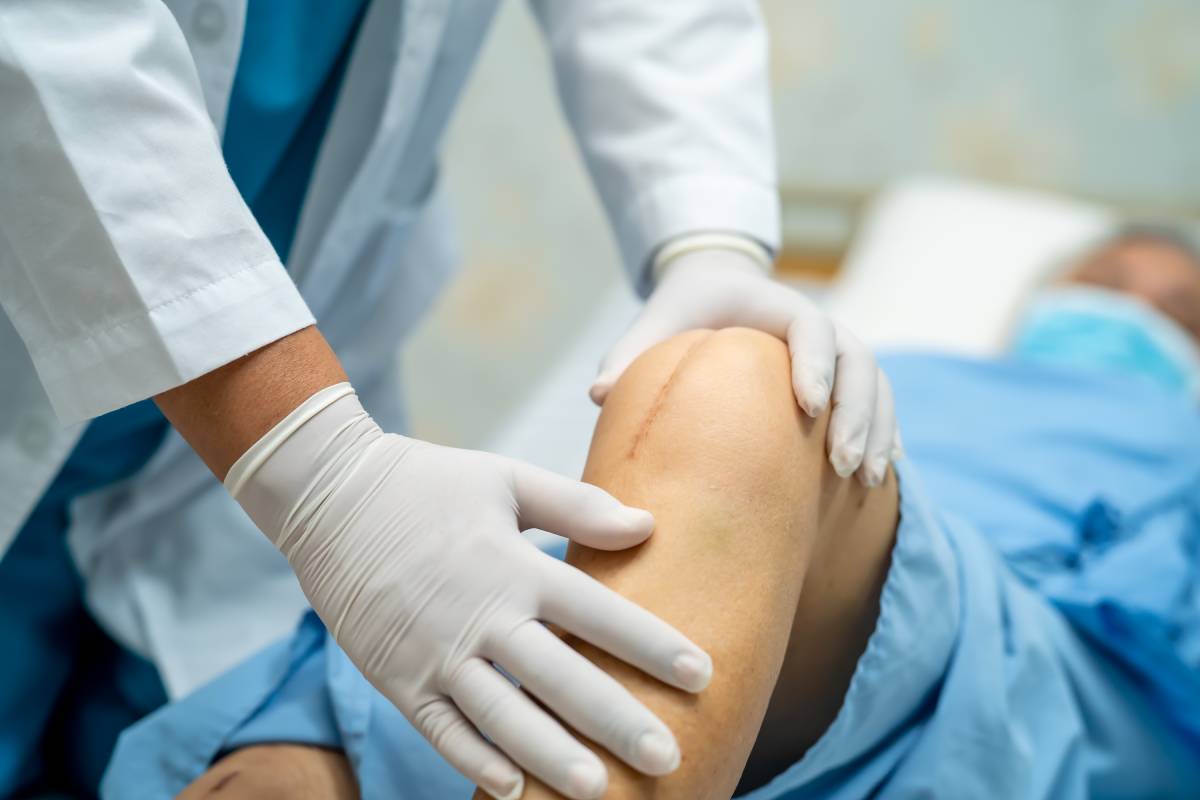A common postoperative concern for patients who undergo orthopedic surgery is scarring, which can occur after any insult to the deep dermis as a result of abnormal physiologic wound healing.1 While this concern is primarily cosmetic (aside for cases in which a highly inflexible scar leads to a significant impairment in physical function), in our society, scars are often seen as unnatural or unsightly, and this has contributed to depression and anxiety, socially avoidant behaviors, and aggressive behaviors in people who have experienced scarring, including those for whom these scars were acquired through a surgical procedure.2 This makes scarring after orthopedic surgery a critical issue both from a biomedical and psychosocial/physician training standpoint.
Two types of scarring due to an abnormal healing response can occur after orthopedic surgery: hypertrophic scarring and keloid scarring. While both types of scars rise above the skin level, hypertrophic scarring is both smaller and far more common (occurring at a rate of 40-70% after surgery as opposed to a 6% to 16% rate of keloid formation after surgery in Black American populations). Hypertrophic scarring does not extend beyond the initial site of injury, and, after the surgical excision of the original scar, there is a very low recurrence rate of the overgrowth. In contrast, keloid scars are typically large and project beyond the original wound margins. Keloid scars are also very difficult to remove permanently because there is a high recurrence rate of the scar after the overgrowth has been excised.1
There are, however, some options for mitigating the appearance of keloid scars. As mentioned, there is a high recurrence rate (45-100%) of recurrence with surgery alone, and so the treatment strategy for patients with keloid scars must often be multifaceted. One preventative method is to use a silicone gel bandage to apply pressure to the injury site; this method is frequently highly uncomfortable for the patient. Another option for smaller keloids is to inject them with cortisone or other steroids monthly for up to six months. Possible side effects of steroid injections as a treatment for keloid scarring is hypo- or hyper-pigmentation, spider veins, and skin thinning. It is also possible to use cryotherapy (freezing the keloid growth), laser treatment, or low-level X-ray radiation therapy to remove or reduce the size of keloid scars–however, these methods may have painful and potentially life-threatening side effects and do not prevent the recurrence of the keloid scar. As such, at present, it is not unusual for patients with keloid scarring to be unable to ever remove the scar permanently.3,4
Given this current state of affairs, and the social and psychological cost faced by patients with severe scarring after surgery, it is critical for physicians to be trained not only about the clinical management of scarring and other postoperative medical concerns, but also about how to advise and support patients struggling with their appearance after developing a potentially permanent scar. There is not yet much in the literature that offers insight into how physicians can be most helpful to patients in these scenarios–a study in 2018 found that physicians and patients have vastly different perspectives and priorities regarding scarring after surgery, further highlighting the need to bridge the gap between physician and patient understanding of scars and the psychosocial needs they entail through research and training.5 As we continue to develop better clinical treatments for postoperative scarring, it is imperative that we also find better ways to serve the patients who are likely to bear their scars for the rest of their lives.
References
(1) Gauglitz, G. G.; Korting, H. C.; Pavicic, T.; Ruzicka, T.; Jeschke, M. G. Hypertrophic Scarring and Keloids: Pathomechanisms and Current and Emerging Treatment Strategies. Mol Med 2011, 17 (1–2), 113–125. https://doi.org/10.2119/molmed.2009.00153.
(2) Grabowski, G.; Pacana, M. J.; Chen, E. Keloid and Hypertrophic Scar Formation, Prevention, and Management: Standard Review of Abnormal Scarring in Orthopaedic Surgery. Journal of the American Academy of Orthopaedic Surgeons 2020, 28 (10), e408–e414. https://doi.org/10.5435/JAAOS-D-19-00690.
(3) Keloid scar – Diagnosis and treatment – Mayo Clinic https://www.mayoclinic.org/diseases-conditions/keloid-scar/diagnosis-treatment/drc-2052 0902.
(4) Keloid Scars | Michigan Medicine https://www.uofmhealth.org/health-library/abp9862.
(5) Zhang, J.; Miller, C. J.; O’Malley, V.; Bowman, E. B.; Etzkorn, J. R.; Shin, T. M.; Sobanko, J. F. Patient and Physician Assessment of Surgical Scars: A Systematic Review. JAMA Facial Plast Surg 2018, 20 (4), 314–323. https://doi.org/10.1001/jamafacial.2017.2314.
(6) Ngaage, M.; Agius, M. The Psychology of Scars: A Mini-Review. Psychiatr Danub 2018, 30 (Suppl 7), 633–638.
